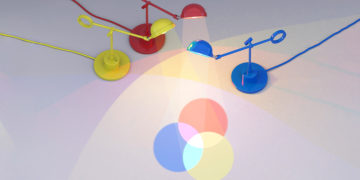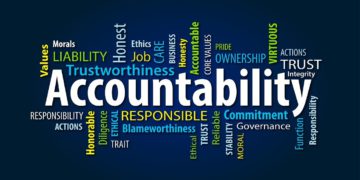It’s a question I’ve been exploring for years:
How do new and emerging leaders develop skills that truly stick?
Not just through theory. Not just through advice. But through real-world application.
Traditional approaches, like coaching, mentoring, or feedback from managers and direct reports, have their place. But peer leadership collaboration offers a unique dynamic of mutual learning and accountability. It minimizes power dynamics, encourages candid feedback, and fosters real-time, collaborative skill development.
This understanding led me to create a structured, collaborative practice framework for peer leaders, a model designed to optimize applied learning outside of daily work pressures and accelerate growth in real-world contexts.
Then over the last couple of years as I’ve been refining this framework, easy access to AI exploded onto the scene.
Like many of my professional peers, I use AI tools like ChatGPT, Gemini, and Grok daily, and I would absolutely say they’ve enhanced how I access information, spark ideas, and tackle problems. At the same time, they’ve challenged me to reflect and consider a very important question:
If AI can offer instant, tailored advice, how important really is it to involve other people (peers) in leadership development?
I think it’s a fair question. In my opinion AI, particularly large language models, are already better than most mentors, managers, and coaches at providing structured, insightful responses. They don’t just offer surface-level advice; they analyze, challenge, and even simulate difficult scenarios.
So, if leadership development were only about gaining insight, AI would probably already be superior. But leadership isn’t just about insight. And that’s where this peer leadership practice framework is fundamentally different.
Leadership Isn’t Just a Skill, It’s a Relationship
The practice I’m talking about isn’t a content library. It’s not a training program. It’s real-time leadership collaboration between two people. And as obvious as it may seem, what makes this approach unique isn’t just the structure, it’s the human element.
In peer leadership practice, you’re not just solving leadership problems in isolation, you’re also helping someone else tackle theirs. And this dynamic offers things that AI simply can’t.
1. AI Can Give You Answers, But It Can’t Depend on You
I find it amazing that AI is always available, it never hesitates, never waits, and never cares whether you show up or not. But real people do!
In a peer-to-peer leadership framework, the person leading the challenge isn’t just developing skills in isolation. They’re responsible for shaping a peer’s thinking, confidence, and decision-making. And that peer feels the impact of that leadership in real time. And the leader knows they feel it.
For example, you’re coaching a peer through a decision-making challenge. You offer advice that doesn’t land quite right. They hesitate, because they are unsure how to proceed. That hesitation? You feel it, and you know they feel it too, because they’re depending on you to provide clarity. That awareness doesn’t just push you to clarify your thinking, it pushes you to step up as a leader.
And because you know they’re counting on you, you internalize your role as a leader. This sense of accountability is key, because leaders don’t just grow by learning. They grow by seeing their impact on others and realizing that their leadership matters.
In my own experience, although AI can certainly challenge me, it will never need me. In fact, it doesn’t feel at all, and I know it doesn’t feel at all. And that awareness shifts how I interact with it.
2. AI Can Simulate Conversations, But It Can’t Create Social Weight
In the context of leadership social weight isn’t just about exchanging words. It’s about the emotional stakes that come from knowing your leadership affects another person’s experience in real time.
In peer leadership practice, the dynamic is mutual. If you hesitate, the other person feels it. If you lead with clarity, they gain confidence. If you disengage, they sense that too. This emotional feedback loop, the knowledge that your leadership has emotional consequences for someone else’s growth, is what makes the experience human.
AI can simulate conversations, but it can’t simulate this emotional gravity. It doesn’t care if you show up late, hesitate, or disengage. It won’t feel frustrated if your leadership is unclear or incomplete. And because you know it doesn’t care, the interaction lacks the human stakes that real leadership demands.
But with a real person, this emotional weight is unavoidable. You feel the responsibility of impacting someone else, and they feel it too.
3. AI Helps You Think, But Peer Leadership Practice Makes You Act
AI is a powerful tool for refining ideas. In my work it helps me to clarify my thinking, sharpen my reasoning, and sometimes even rehearse potential responses. But AI doesn’t require me to act in the moment.
Peer leadership practice demands real-time engagement. You can’t pause, reflect for hours, or draft a perfect response. You have to engage, adjust, and respond in the moment, with another person depending on you. If you hesitate or misstep, there are immediate consequences, a pause, a shift in energy, a sense that your leadership fell short.
For example, imagine helping a peer navigate a difficult conversation with their team. Midway through, you realize your guidance is too vague. They pause, uncertain how to move forward. That pause? You feel it in the moment. And because you know they’re relying on you, you clarify your thinking, step up, and adjust your approach.
This is leadership in action, not just knowing what to do, but doing it. You’re not rehearsing leadership. You’re living it.
This Practice Model Works, But It’s Not for the Faint of Heart
Even with the undeniable opportunities this model offers, it’s not for the faint of heart. Peer leadership practice requires focus, rigor, and a willingness to engage deeply.
- As the person leading the challenge, you need to be direct and honest about what you’re working on.
- As the peer collaborating with you, you have to say yes to challenges, commit to staying in them until real insights emerge, and be open to giving and receiving feedback.
- Both parties need to provide honest, critical ratings between each phase of the process, apply insights at work, and engage with performance metrics.
In a nutshell, if you want to grow, if you want to evolve, this practice model can get you there. But evolving is hard work.
The Future of Leadership Development: AI + Human Practice
What I’m sharing here is not an argument against AI. Whether we like it or not, AI will play an enormous role in leadership development. And that can be a good thing.
But as advanced as AI is, it can’t replace the relational elements of leadership practice. Because when leaders know their leadership matters, when they see and feel the impact they have on others, they don’t just lead better. They lead differently. And that’s the part of leadership development that AI, as powerful as it is, can’t provide.
Where Do You Stand?
I’m not claiming to have all the answers here. I’m simply looking to participate in a conversation that I believe is critical for leadership development.
Have you tried using AI for leadership development for yourself or someone you’re working with? What was your experience?
I’d love to hear your thoughts.
My Previous Articles in the Peer Leadership Practice Series:
How to Find Safe Sounding Boards Outside of Your Company (Forbes) Exploring the importance of external peer support for leadership development. https://www.forbes.com/councils/forbescoachescouncil/2019/07/29/how-to-find-safe-sounding-boards-outside-of-your-company/
Getting the Most Out of 360-Degree Reviews (Harvard Business Review) A deep dive into structured feedback and its role in leadership growth. https://hbr.org/2019/11/getting-the-most-out-of-360-degree-reviews
How Emerging Leaders Can Accelerate Development (LinkedIn) Discussing key strategies for leadership growth and practical application. https://www.linkedin.com/pulse/how-emerging-leaders-can-accelerate-development-john-behr-y4ioc?utm_source=share&utm_medium=member_ios&utm_campaign=share_via
From Theory to Practice: How the DOER-R Framework Builds Daily Leadership Habits (LinkedIn) Bridging leadership concepts with hands-on, real-world application. https://www.linkedin.com/pulse/from-theory-practice-how-doer-r-framework-builds-daily-john-behr-kwurc?utm_source=share&utm_medium=member_ios&utm_campaign=share_via
The Leadership Tool You’ll Actually Use: A Practical Guide for New and Emerging Leaders (LinkedIn) https://www.linkedin.com/pulse/leadership-tool-youll-actually-use-practical-guide-new-john-behr


































